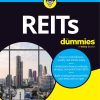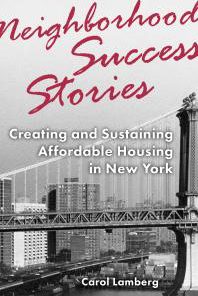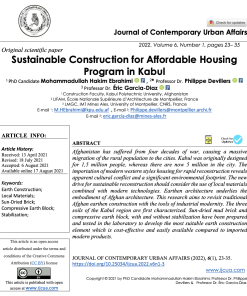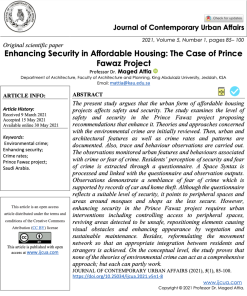The Affordable Housing Reader 2nd Edition by Elizabeth 9781000594836 1000594831
$50.00 Original price was: $50.00.$25.00Current price is: $25.00.
The Affordable Housing Reader 2nd Edition Elizabeth J. Mueller (Editor) – Ebook Instant Download/Delivery ISBN(s): 9781000594836, 1000594831
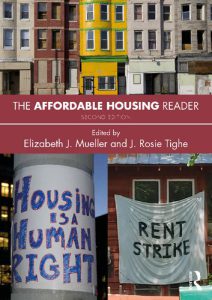
Product details:
- ISBN 10:1000594831
- ISBN 13:9781000594836
- Author: Elizabeth
The Affordable Housing Reader
Table contents:
Part 1: Conflicting motivations for housing policy
Editor’s introduction
In This Section
References and Further Reading
1 A citizen’s guide to public housing: Vassar College, 1940
I Background facts
The American housing problems: analysis by a Congressional Committee
II What are we doing about it?
Instruments at hand, and what we may expect of them
The local housing authority: What it is and does
State of the low-rent public housing program
2 The Housing Act of 1949: Journal of the American Institute of Planners, 1949
Central administration of the program
Local requirements
Types of projects
Financing redevelopment projects
Form of local contribution
Lease or sale
Vacant land projects
Challenge to planning
Notes
3 The evolution of low-income housing policy, 1949 to 1999: Housing policy debate, 2000
Introduction
The housing goal: Overview of the first 50 years
The 1949 goal: Neither timetable nor means
The 1960s: Alternatives to public housing
The 1968 reaffirmation: Both timetable and means
The Nixon administration embraces the 1968 goals
Second-guessing the production strategy: The 1971 report on the national housing goal
Cost
Equity
Environment
Attacks on the production programs from all sides
The Proxmire attack
The 1973 moratorium
Housing vouchers: Retooling an old idea
The EHAP
Vouchers and production: Head-to-head competition
The “triumph” of vouchers
Block grants and the illusion of federal control
Housing block grants: Competing models in the mid-1970s
Housing block grants: An idea in eclipse
The housing establishment endorses block grants; Congress eventually agrees
The LIHTC
How the LIHTC works?
LIHTC as a production program
LIHTC as a block grant
The LIHTC’s friends and critics
Conclusion
References
4 The Kerner Commission and Housing Policy: The Road Not Taken: Housing and Criminal Justice 50 Years after the Kerner Commission Report, 2019
Today’s Racial Injustice Is a Continuation of the “Profiles of Disorder” Analyzed in the 1968 Kerner Commission Report
The Perils of Desegregation
The Debate over Residential Segregation before the Kerner Commission Report
George Romney’s Open Communities
Housing Policy Since the Kerner Commission Report
Housing Policy Today
Notes
5 Advancing the right to housing in the United States: Using international law as a foundation: International Human Rights Committee of the New York City Bar Association, 2016
Introduction
I The right to adequate housing under international law
A The human rights framework on the right to adequate housing
1 International legal principles
2 Regional and national protections
B The specific nature of state obligations under the human rights legal framework
C Housing’s impact on other rights
II The right to adequate housing under US law
A Federal housing laws
B State and local law
1 States generally
2 New York State and New York City
III Shortcomings of US housing law and policy
A Discrimination in the housing market
1 Steering
2 Financing and predatory lending
3 Tax credits
B Discrimination in the rental market
C Post-natural disaster housing crisis
IV Conclusion
Notes
Part 2: Defining and measuring housing problems
Editor’s introduction
In This Section
References and Further Reading
6 What is housing affordability? The case for the residual income approach: Housing Policy Debate, 2006
Introduction
The logic of housing affordability
Semantic and substantive issues relating to affordability
Conceptual rigor versus practical policy implications
Housing affordability versus “affordable housing”
Housing affordability versus housing standards
A normative standard of affordability versus an empirical analysis of housing costs in relation to incomes
Diverse and incompatible definitions of housing affordability
Relative measures
Subjective approaches
Family budget standards approach
The ratio approach
The residual income concept of housing affordability
Debates about affordability standards
Operationalizing a residual income standard
Nonhousing necessities
Personal taxes
Implications and applications
Analysis of housing problems and needs
Eligibility and payment standards for housing subsidies
Conclusion
Notes
References
7 How do we know when housing is “affordable”?: Rethinking Federal Housing Policy, 2008
Poverty and housing affordability
Affordability across space
How should housing affordability be measured?
Notes
8 How affordable is HUD affordable housing?: Housing Policy Debate, 2016
Literature review
Housing affordability
Shortcomings of CNT’s and LAI’s transportation cost models
Methods
Sample
Data and variables
Statistical methods
Transportation models
Travel outcome computations
Cost calculations
Results and discussion
Conclusions
Acknowledgment
Notes
References
9 Consequences of segregation for children’s opportunity and wellbeing: Joint Center for Housing Studies, 2017
Introduction
Children’s neighborhood differences extend beyond poverty
Effects of residential segregation on children
Segregated neighborhoods/segregated schools
Highest levels of segregation occur at critical preschool age
Rising income segregation isolates poor and minority students in disadvantaged schools
Effects of segregation/integration on academic achievement
School integration brings benefits beyond achievement gains
Discussion
Notes
References
10 Home is where the harm is: Inadequate housing as a public health crisis: American Journal of Public Health, 2002
Dangerous comfort
Home sick
Primary prevention
Meeting the demand for adequate housing
Communities fight back
Getting specific
Public health and social justice
A community in crisis
At risk in rural America
Effecting change from within
References
Part 3: Housing tenures
Editor’s introduction
In This Section
References and Further Reading
11 The grapes of rent: A history of renting in a country of owners: Housing Policy Debate, 2010
The bias of ownership
The colonial heritage: Property, taxes, and suffrage
Property and tenancy in the confederation
Land sales and homesteads: Privatization for ownership
A gradual change of strategy: From giving land away to giving incentives to buy
Who owns America?
Conclusions
References
12 The sustainability of low-income homeownership: The incidence of unexpected costs and needed repairs among low-income homebuyers: Housing Policy Debate, 2011
Introduction
Literature review
Mortgage burden
Tax benefits
Maintenance
Accessing home equity
Data and methodology
Sample
Findings
Ability to meet housing expenditures
Housing burden
Income and nonhousing assets
Housing costs and repairs
Access to credit and debt
Outstanding nonmortgage debt
Who is likely to experience problems after home purchase?
Conclusions and implications
Notes
References
13 Old wine in private equity bottles? Resurgence of contract-for-deed home sales in US urban neighborhoods: International Journal of Urban and Regional Research, 2018
Introduction
The racialized history of the CFD
The CFD in the 21st century
Examining the practices of a CFD seller
The geography of a CFD seller
Conclusion
Notes
References
14 Making home more affordable: Community land trusts adopting cooperative ownership models to expand affordable housing: Journal of Community Practice, 2018
Introduction
Literature review
SEH models
Assessing CLT and LEC models: A review of the research
CLTs
LECs
Methodology and data
Findings
CLTs with LEC projects: introduction to the cases
Lopez Community Land Trust
San Francisco Community Land Trust
Northern California Land Trust
Champlain Housing Trust
Cooper Square Mutual Housing Association
Case comparison: Units, housing markets, and affordability
CLT and LECs: Better together?
Project impetus: The rationales for CLTs to explore the LEC model
The role(s) of the CLT in LEC projects
The CLT–LEC relationship
Discussion and conclusion
Notes
References
Part 4: Provision of affordable housing
Editor’s introduction
In This Section
References and Further Reading
15 The quadruple bottom line and nonprofit housing organizations in the United States: Housing Studies, 2012
Introduction
The US social housing sector
Nonprofit social housing organizations add activities to fulfill missions: A preview of the current movement toward hybridity
Key reason for nonprofits incorporating private market operations: Changes in public funding for affordable housing
Mediating the private market and the quadruple bottom line
As nonprofits’ missions broaden, the potential conflicts inherent in trying to meet all components of the “quadruple bottom line” become apparent
In attempting to meet the “Quadruple Bottom Line,” nonprofits are likely to become more hybrid in their operations
Federal funding cutbacks put more pressure on nonprofits to become more hybrid in their operations
Increased hybridity in nonprofits’ operations makes fulfilling the “Quadruple Bottom Line” more challenging
Concluding observations
References
16 American murder mystery revisited: Do housing voucher households cause crime?: Housing Policy Debate, 2012
Introduction
Background and prior literature
Data and methods
Descriptive statistics
Methods
Results
Conclusion
Notes
References
17 From public housing to public–private housing: 75 Years of American Social Experimentation
Public housing as social experimentation
Seeking out the barely poor
Seeking out the elderly
Seeking out the most needy: A contested interlude
Seeking private landlords
Seeking private developers
Seeking community partners and private investors
Seeking the return of the worthy poor
Public housing: W(h)ither the public?
Notes
References
18 What should be the future of the Low-Income Housing Tax Credit Program?: Housing Policy Debate, 2018
The basics of the LIHTC program
Literature review
Are LIHTC units being located in distressed areas and areas with concentrations of minorities?
Is the LIHTC program promoting mixed-income housing at the neighborhood level and the project level?
Is the LIHTC serving a price point in the rental markets with a need for more units?
Is the LIHTC program serving tight markets with new construction, and rehabbing units in soft markets?
Should the LIHTC program help people or places?
Data
Analysis
Research question 1: How are LIHTC units distributed by level of distress and racial composition?
Research question 2: Are LIHTC developments promoting mixed-income housing?
Research question 3: How are LIHTC units distributed across tracts by shortage of units for the income segment served by the LIHTC program?
Research Question 4: How are LIHTC units distributed across tracts by vacancy rate with new construction favored in tracts with a scarcity and rehabilitation in tracts with a surplus?
Conclusions and policy implications
A set of reforms to the program could address these issues
Notes
References
Part 5: The meaning of place
Editor’s introduction
In This Section
References and Further Reading
19 Federal support for CDCs: Some of the history and issues of community control: The Review of Black Political Economy, 1973
I Introduction
II History
A Program control
B The experiment
III Community economic development
A Central goal
Notes
20 W(h)ither the community in community land trusts?: Journal of Urban Affairs, 2018
Introduction
Institutionalizing and professionalizing movements
Community control and community empowerment in the history of CLTs
The literature on community control in contemporary CLTs
The mission statements: What do the CLTs themselves say?
The CLT practitioners and funders in their own words
The growth of big CLTs
CLTs as technocratic policy intervention
The representation of CLTs: The expulsion of radical politics
Why does it matter what has been lost?
The multifaceted CLT
The empowering CLT
Conclusions
Notes
References
21 Community Development Corporations in the right-sizing city: Remaking the CDC model of urban redevelopment: Journal of Urban Affairs, 2018
Introduction
The shifting roles of CDCs
Right-sizing in Detroit
The new role of CDCs
Competing visions
CDC constraints in the right-sizing coalition
Spatial funding agendas
Silencing of race–class critiques of redevelopment
Discussion
Acknowledgments
Notes
References
22 Planning for empowerment: Upending the traditional approach to planning for affordable housing in the face of gentrification: Planning Theory and Practice, 2016
Introduction
Rights, resistance and the emerging sites of planning
Methodology
Sites of planning in Washington, DC
The Columbia Heights case
Sites of planning: Tenants and advocates
Sites of planning: Making connections between tenants, advocates, and government
Sites of planning: Advocacy and policy
Discussion
Conclusion
Notes
References
Part 6: Planning and land use
Editor’s introduction
In This Section
References and Further Reading
23 It’s time to end single-family zoning: Journal of the American Planning Association, 2020
The case against R1
The nonexistent case for R1
Conclusion: The elephant in planning’s room
Notes
References
24 Democracy in action? NIMBY as impediment to equitable affordable housing siting: Housing Studies, 2015
Introduction
The conflict between democracy and equity
Democracy: The communicative turn
Equity: Seeking just outcomes for the marginalized
Siting affordable housing
Approach
Results
Opposition by project location and type
The who, how, and when of opposition
The effects of opposition
Overcoming NIMBY
Discussion
Promoting democratic principles
Promoting equitable outcomes
Conclusion: Improving democracy and equity in affordable housing
Siting decisions
Notes
References
25 Progress for whom, toward what? Progressive politics and New York City’s Mandatory Inclusionary Housing: The Journal of Urban Affairs, 2017
The progressive past
The progressive present
Case study: Mandatory Inclusionary Housing
Progress for tenants toward housing security
Notes
References
26 One size fits none: Local context and planning for the preservation of affordable housing: Housing Policy Debate, 2019
The preservation challenge and responses
Local policy responses for preservation
Local strategies in context
Chicago: Working with private owners to address poor conditions
The preservation compact
New resources
Policy innovation
Tenant-based preservation in Washington, DC
The DC Preservation Network
Policy innovation
Austin, Texas: An emerging initiative
Disjointed policy development
Persistent policy challenges
Discussion
Defining local preservation problems
Marrying federal and local resources
Preservation networks
Conclusion
Funding
Note
References
Part 7: Threats to housing security
Editor’s introduction
In This Section
References and Further Reading
27 Unaffordable America: Poverty, housing, and eviction: American Journal of Sociology
The decline of affordable housing for poor Americans
The prevalence of eviction
Who gets evicted?
Consequences of eviction
Policy implications
Notes
28 Metropolitan segregation and the subprime lending crisis: Housing Policy Debate, 2012
Subprime lending and the current economic crisis
An overview of mortgage lending in minority neighborhoods
Predictors of subprime lending
Data and methodology
Analytic strategy
Results
Discussion
Further research
Policy recommendations
Conclusion
Notes
References
29 Inequities in long-term housing recovery after disasters: Journal of the American Planning Association, 2014
Data and methods
Analytical approach
Findings
The effects of damage are long lasting
Owner-occupied housing suffers less damage and recovers more quickly
Housing in higher-income neighborhoods suffers less damage and recovers more quickly
The consequences of race and ethnicity are mixed
Multifamily housing recovers more slowly and is susceptible to change
Conclusions and recommendations
Incorporate hazard mitigation and disaster recovery into comprehensive planning
Increase housing choice
Direct recovery assistance to those who need it most
Limitations and future research
Notes
References
30 Rental housing assistance and health: Evidence from the survey of income and program participation
Why rental housing assistance may improve low-income renters’ health
Low, fixed housing costs
Protection against eviction
Housing and neighborhood conditions
Effects of rental assistance on health
Methodology
Data sources and variables
Modeling approaches
Limitations
Does rental assistance improve low-income renters’ health?
Differences between assisted and unassisted renters
Determinants of renters’ health status and spending
Effects of living in assisted housing on renters’ health
Effects of moving into assisted housing on renters’ health
Discussion and conclusion
Notes
References
Part 8: Race and fair housing
Editor’s Introduction
In This Section
References and Further Reading
31 Whiteness and urban planning: Journal of the American Planning Association, 2020
Toward a whiteness framework for urban planning
Components of the framework
Whiteness and exclusion
The value of whiteness
The invisibility of whiteness
The durability of whiteness
What a whiteness frame can mean for urban planning
Implications for urban planning research
Implications for urban planning practice
Surfacing whiteness
Rethinking exclusionary land use planning
Antisubordination planning
Community power and value capture
Reparative planning
Conclusion
Notes
References
32 The experience of racial and ethnic minorities with zoning in the United States: Journal of Planning Literature, 2017
Exclusionary zoning
Intensive and expulsive zoning
Zoning as a tool of minority integration and protection
Conclusion
Notes
References
33 Still paying the race tax? Analyzing property values in homogeneous and mixed-race suburbs: Journal of Urban Affairs, 2010
Literature review
Gap in property value appreciation rates in neighborhoods with different racial and ethnic compositions
Factors that explain the gap in property value appreciation rates in neighborhoods with different racial and ethnic compositions
Economic factors
Structural factors
Data and methodology
Data
Methodology
Results
Descriptive statistics
Property values and their appreciation
Influences on property values
Public policies
Conclusions and future research
Notes
References
34 The duty to affirmatively further fair housing: A legal as well as policy imperative
The statutory duty to affirmatively further fair housing
Litigation
Boston Chapter of NAACP
Westchester
Regulation
What will “Compliance” with the AFFH regulation look like?
Lessons from the Voting Rights Act
Using AFFH to enforce the Fair Housing Act and related civil rights laws
AFFH beyond HUD
People also search:
the affordable housing reader
the affordable housing
the affordable housing program
the affordable housing group
reading affordable housing
You may also like…
Uncategorized
Worlds Together Worlds Apart A Companion Reader 2nd Edition by Elizabeth 0393937771 9780393937770
Housekeeping & Leisure - Interior Design & Decoration
Uncategorized
Arts - Architecture
Arts - Architecture
Education Studies & Teaching - Educational Theory
Education Studies & Teaching - School Education & Teaching



